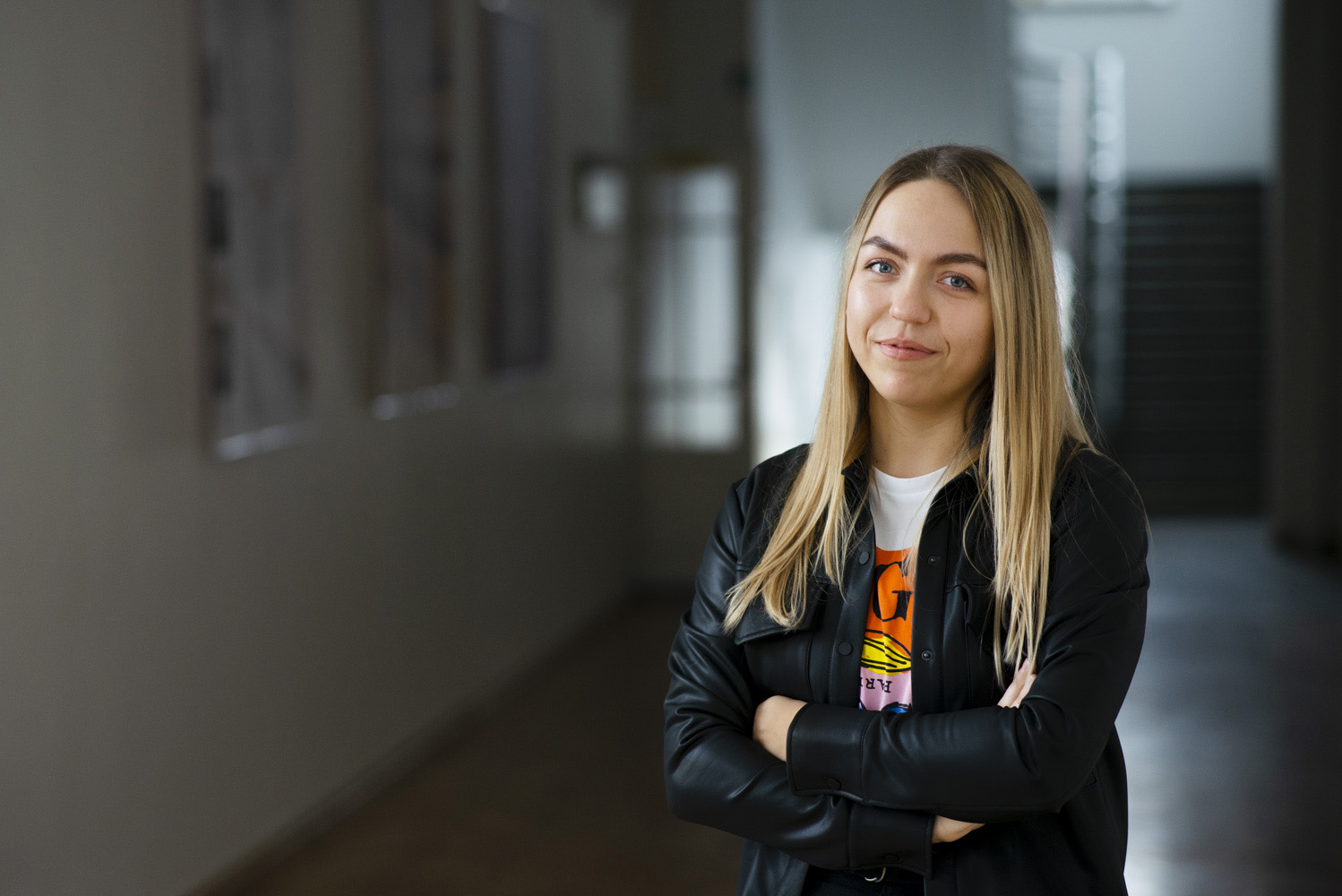 Beatričė Raščiūtė. Photo: VU MF
Beatričė Raščiūtė. Photo: VU MF
“All my life, I have been saying that I would never work in an accident and emergency department, but… here I am. I chose this field because during my studies, I did not see a field that I would be entirely captivated by or one that I would not like at all. The thing that is fascinating about emergency medicine is that you never know what patient will come next!”, said emergency medicine resident, Beatričė Raščiūtė.
Beatričė works in the Accident and Emergency Departments of Republican Vilnius University Hospital and Vilnius University Hospital Santaros Klinikos. She also teaches at Vilnius University’s Internal diseases, family medicine and oncology clinic, and conducts initial resuscitation trainings in Vilnius schools as part of the project “Tuk, tuk, širdele, tuk, tuk – būk sveika”.
Emergency medicine is still a very young speciality
Beatričė said the speciality captivated her by its great variety, the unexpectedness factor, and non-existent routine: “Each working day, every shift is different in some way. Sometimes, we are in the doldrums, sometimes, you arrive at work at 8 in the morning and never stop until 8 the next morning.” According to her, the emergency medicine residency is one of the longer ones – it takes 5 years. During this period, residents study traumatology, surgery, and therapy, and work in resuscitation wards, while the entire fourth year is devoted to children’s diseases.
However, the resident noted that emergency medicine doctors, and residents who are working towards one, often encounter indifference to this speciality. “There are some specialists who like working with us, but from some others we sense animosity. Perhaps this is because this is a new and unusual speciality. For example, I am a 9th generation of ‘rushes’ – that is how they colloquially refer to us. As there are still not many emergency medicine doctors who pursue research activities, we try to participate in conferences, and build contacts with doctors and researchers from other countries as much as possible”, she emphasised.
Achievements in work
On 23–24 November, the young resident together with her colleagues took part in a remote conference “Biomarkers of the Future Conference: From Bedside to Practice” and was awarded the second place in the best poster group. “We had just returned from the European Congress of Emergency Medicine and considered giving it a miss due to the lack of time. However, ultimately we chose to participate at the last minute, and the win was unexpected”, Beatričė said.
She received an invitation to the conference from her colleague Renata Juknevičienė, a doctoral student at Vilnius University. “Everybody who worked with biomarkers could take part in the conference. The more the science progresses, the better the realisation is of how to apply them in clinical practice. We spoke about the use of copeptin and troponin biomarkers in the development of a prognostic model for non-ST-segment-elevation myocardial infarction diagnostics”, she said. The presentation aimed at presenting the research conducted, as well as conveying how important it is for accident and emergency staff to quickly and accurately diagnose an acute myocardial infarction.
“In the Accident and Emergency Department, the workload is sometimes very high. The flow of patients increases every year, and especially during the COVID-19 pandemic. Now, as we face the complicated situation at clinics, the flows of patients in A&E departments have increased significantly, with consequent overcrowding. Naturally, this increases the likelihood of errors and the workload for staff, and the waiting times for patients increase too. This, in the case of acute conditions, is detrimental for the patient”, Beatričė explained.
The emergency medicine resident has been working with doctoral student Renata Juknevičienė for several years. “I joined the subject examined by Renata about the application of copeptin for the diagnostics of acute coronary syndromes back during my studies. Patients who presented at the A&E department with chest pains were included in the research. Based on scientific literature, we performed various statistical calculations and presented the data obtained and conclusions in presentations, or, as this time – by preparing a scientific poster.”
